AMD Kaveri Review: A8-7600 and A10-7850K Tested
by Ian Cutress & Rahul Garg on January 14, 2014 8:00 AM ESTDrawing Performance Conclusions
As I progressed through the testing for this review, I became aware of trends in two things: absolute performance, in terms of numbers, and generational improvements across platforms. With AMD moving the Bulldozer based architectures from Piledriver in Trinity and Richland to Steamroller in Kaveri, the base CPU design has had a relatively long run in order to be optimized to the limitations on the CPU side. Obviously AMD has also had a chance to change the lithography node in there as well, and as such has optimized for design rather than performance. This matters a great deal when we look at the power banding (45W, 65W, 95W) and performance in each segment.
In order to display just how much Kaveri has grown in relation to the previous generations, I processed our mountain of data to show graphs where percentage gain against the older generations really does matter. As mentioned previously in this review, it all depends on whether the software can take advantage of the new features afforded by the architecture. In this review we have spent a lot of time discussing advantages for Kaveri in terms of compute (HSA, hUMA, hQ) and gaming (Mantle, TrueAudio), but some of these are still a little way off for software integration. So what does that translate to if you are looking for an APU today – does Kaveri still expand its wings with the integration of the GCN architecture, or does it lag behind due to the lithography node no longer being optimized for frequency. The proof is in the results.
IGP Gaming, 1280x1024
For the 100W APUs at 1280x1024, there is almost no movement between the Richland and the Kaveri APUs, except for Company of Heroes which would seem to leverage the extra SPs more than the MHz available.
45W APUs are clearly in vogue at 1280x1024, each of them providing a good bump over Richland.
IGP Gaming, 1680x1050
1680x1050 sees more benefit for the 100W APUs, but the 45W APUs still show big leaps.
IGP Gaming, 1920x1080
At 1080p the effects are more pronounced all around.
CPU Timed Benchmarks
Unfortunately the CPU timed benchmarks at 100W are bit over the place. Here we are dealing with an IPC gain but MHz deficit, and each benchmark has a different way of dealing with it. For Agisoft, MHz wins, but for Xilisoft, the Kaveri improvements work out well for the system.
At 45W the situation is a lot more clearer, and the newer APUs have the advantage, especially in Adobe After Effects.
CPU Score Benchmarks
45W still makes the biggest jump when it comes to score based CPU benchmarks.
IGP Synthetics
I never like putting much thought into the synthetic results – here both the 100W and the 45W range are showing good improvements all around. 3DMark 06 has the most trouble getting improvements as it relies more on the grunt, rather than the features that Kaveri affords.
IGP Compute
Off the bat we can see just how much of a difference the Kaveri GPU Compute can make over previous APUs. This is still without hUMA fully being in effect while we wait for a proper driver and software stack to become available.
Up to a +222% boost from Kaveri is amazing for a 45W part.
AMD vs Intel
For a little tete-a-tete, putting the 65W Iris Pro up against the 65W Kaveri seems like a good idea. To add to the mix, due to the extreme price difference of Iris Pro in this equation, we also add the 95 W Kaveri for comparison.
It is interesting to note that at the lower resolutions the Iris Pro wins on most benchmarks, but when the resolution and complexity is turned up, especially in Sleeping Dogs, the Kaveri APUs are in the lead.


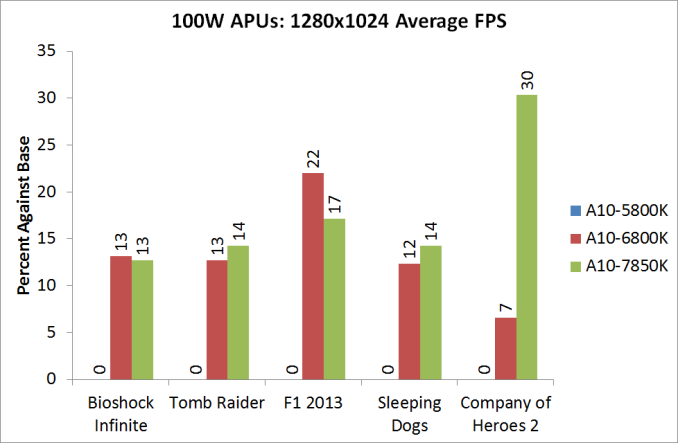
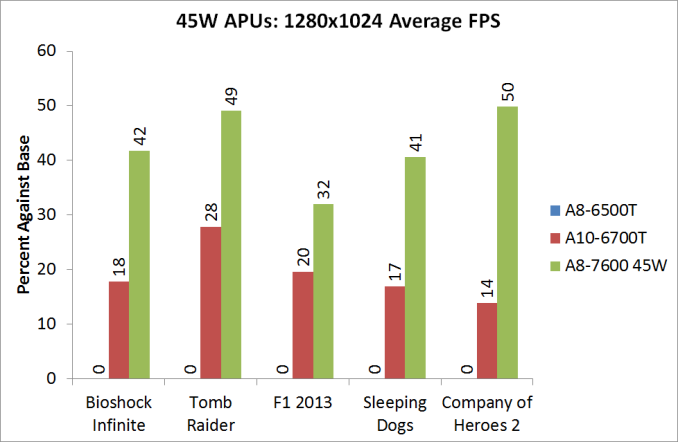
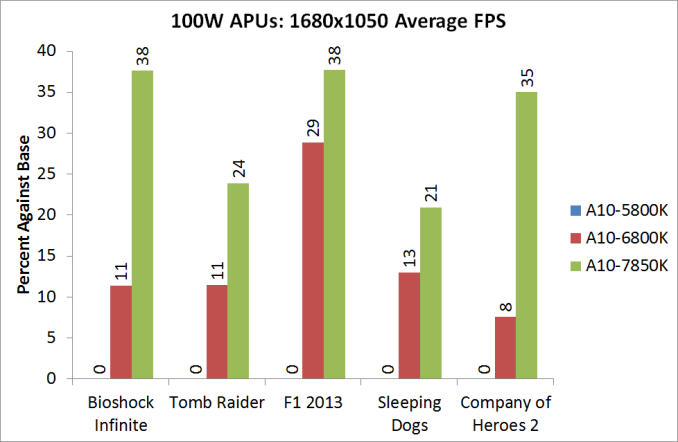
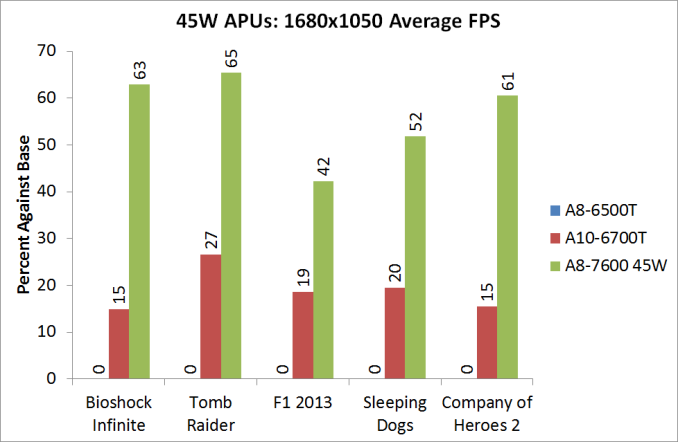
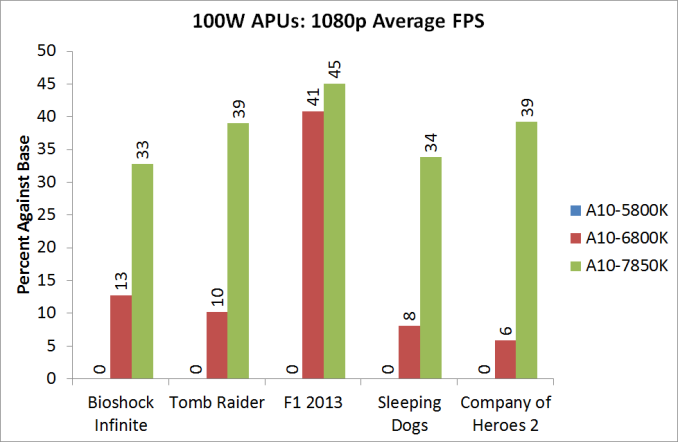

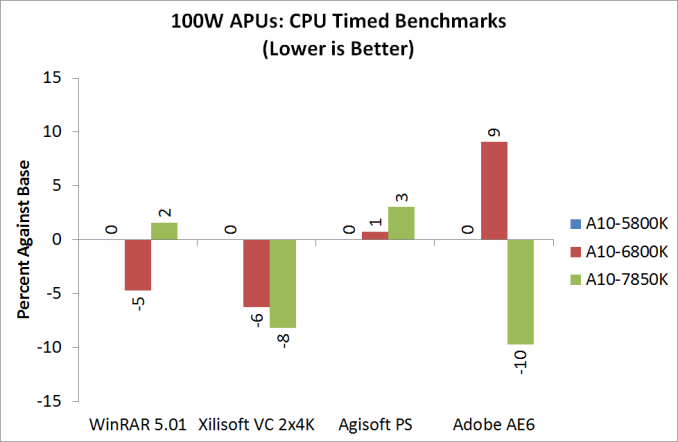
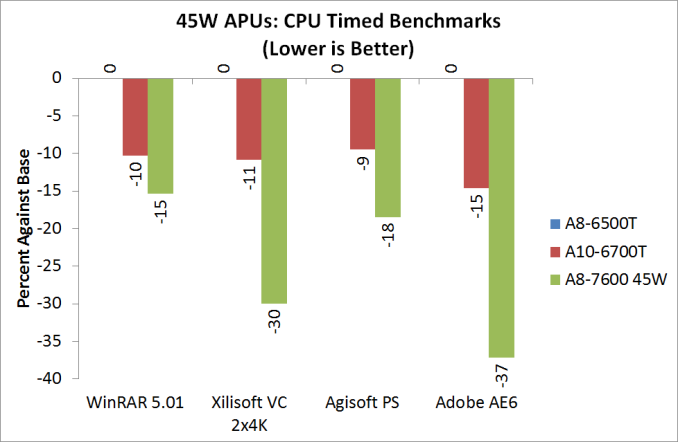

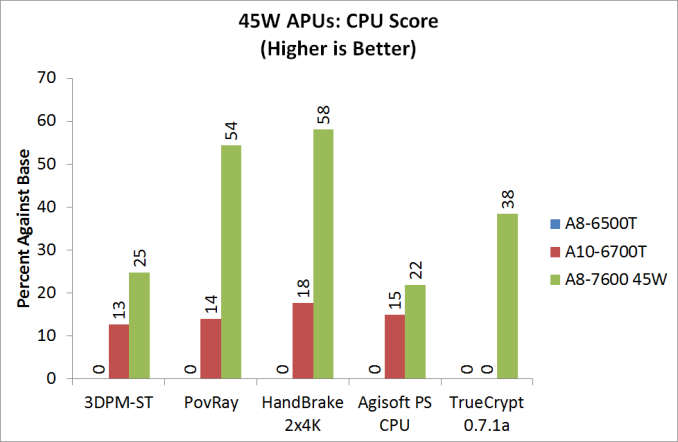
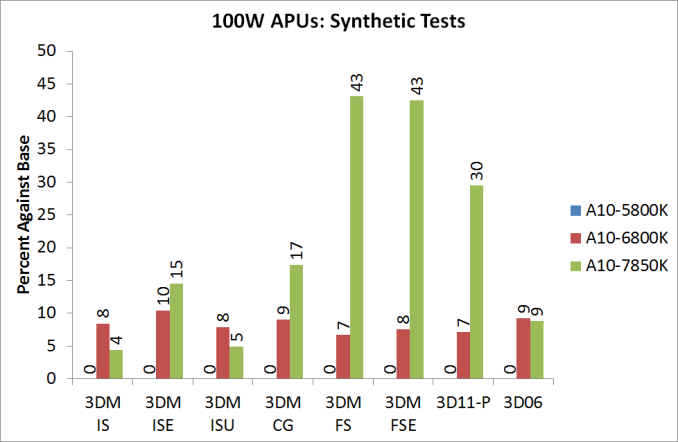
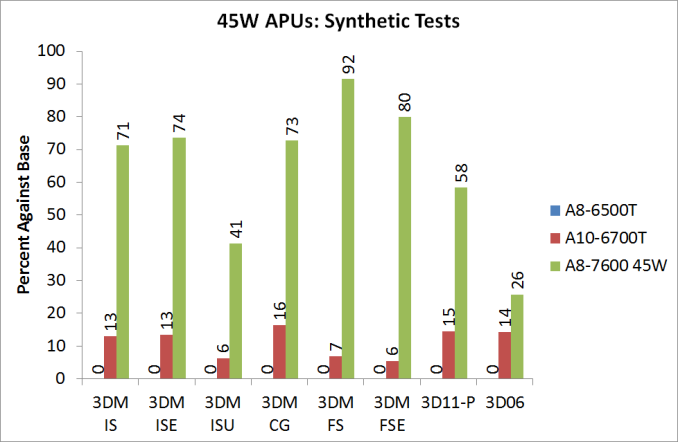
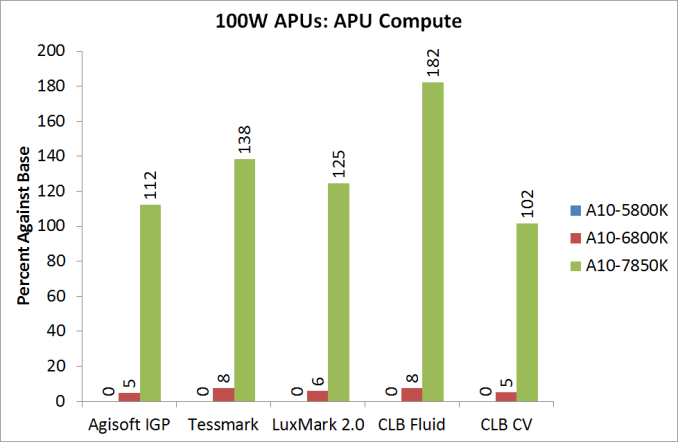

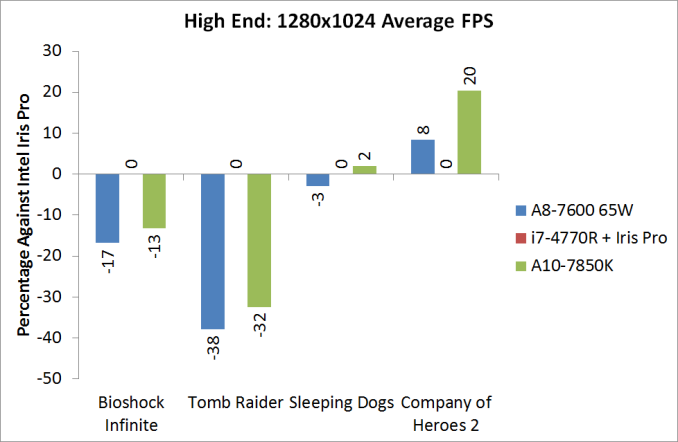
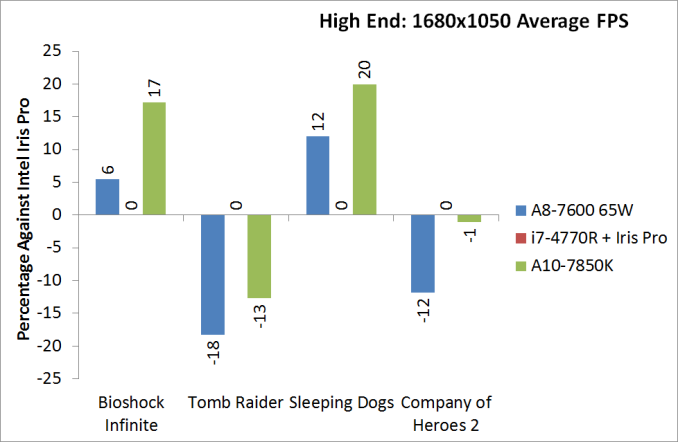
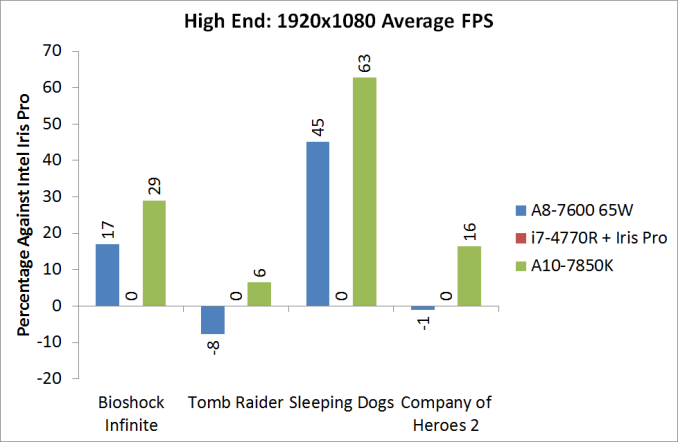








380 Comments
View All Comments
keveazy - Wednesday, January 15, 2014 - link
Compete to do heavy software and GAMING. My motherboard only costs $60. Of course I "checked". Intel is not stupid. Their 4600 is not meant for gaming and they Don't boast about it. I use a dedicated GPU to run games.AMD keeps on advertising their igpu that it can run today's games like battlefield 4 on 1080p. Yeah, on Low settings...... Even the PS4's gpu is better than that.
YuLeven - Thursday, January 16, 2014 - link
If general tasks and gaming is on stake here, I say buy a cheap Pentium G for US$65 and a HD 7770GE for US$110 (today's price at newegg). The SSD too, of course. Voilá, you have fast general tasks and a GPU that makes the A10-7850K's GPU look like a toy.just4U - Thursday, January 16, 2014 - link
Your I5 costs $200ish.. sales might get that down to 185 if your lucky.. I rarely see it though.keveazy - Saturday, January 18, 2014 - link
I bought my I5 4440 for $175 dude. you serious?Laststop311 - Wednesday, January 15, 2014 - link
the 45 watt one oe 65 watt once would make an awesome htpc loaded withh all the old school emulators and so,e mew games with controllers.JDG1980 - Wednesday, January 15, 2014 - link
Old-school emulators will work fine on almost any modern system, including one with Intel's integrated graphics.fox1986 - Wednesday, January 15, 2014 - link
Would it be possible to make a fm2 motherboard with 6 display outputs?fteoath64 - Sunday, January 19, 2014 - link
"with 6 display outputs?". Buy a Netfinity 6 port Gpu card and stick it on the PCIe X16 slot and you are set. There was one Netfinity card that had 5 miniDP ports and a DVI connector, if I am not mistaken.figus77 - Wednesday, January 15, 2014 - link
"It is interesting to note that at the lower resolutions the Iris Pro wins on most benchmarks, but when the resolution and complexity is turned up, especially in Sleeping Dogs, the Kaveri APUs are in the lead."It's simple... al low resolution and detail the raw power of the i5 crush the A10 when there is not GPU bottleneck...
duploxxx - Wednesday, January 15, 2014 - link
that could be tested inserting an equal discrete GPU on to both systems....